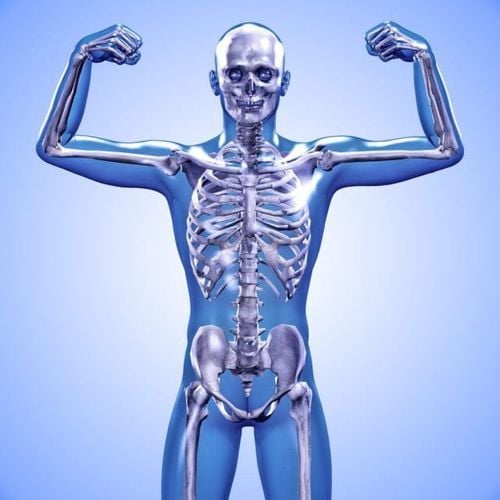This is an automatically translated article.
Posted by MSc.BSCKI Vo Khac Khoi Nguyen - Department of General Surgery - Vinmec Central Park International General Hospital.Not just a common vitamin, Vitamin D is also known as an important "material" in promoting and maintaining bone and body health. Currently, vitamin D deficiency has become a worldwide public health problem and its prevalence increases with age and especially among office workers due to sedentary lifestyles and limited exposure to sunlight. sunlight due to working indoors.
Vitamin D deficiency increases the risk of osteomalacia, osteoporosis, and fractures. Not only that, studies show that: Vitamin D deficiency is associated with many diseases such as cardiovascular disease, type I and type II diabetes, dyslipidemia, chronic kidney disease, and other diseases. causes of fibrosis, tuberculosis, infectious diseases, cancer, .... Even vitamin D deficiency is associated with overall mortality in adults.
1. Vitamin D deficiency is becoming a "pandemic"
A series of reports from many parts of the world show that the "vitamin D deficiency epidemic" is spreading. In high-latitude regions such as Northern Europe and North America, the prevalence of Vitamin D deficiency in the population is quite high, ranging from 50-70%. In Asia and tropical countries - where there are abundant sunshine hours - the rate of vitamin D deficiency is not much lower. Typically, in Japan and Korea, the prevalence of vitamin D deficiency is up to 80-90%. In Southeast Asia, countries such as Thailand, Malaysia..., which are close to the equator and have more sunshine hours, the prevalence of vitamin D deficiency in the general population is approximately 50%. In particular, these numbers are located mainly among office workers.
Vitamin D ảnh hưởng quan trọng đến sự phát triển của trẻ
2. Factors affecting the concentration of Vitamin D in the blood
Studies have shown that there are many factors related to Vitamin D levels. Specifically:Geography and climate The higher the latitudes, the more likely the population there is to be deficient in Vitamin D. Blood levels of Vitamin D are often low in winter – a time of year with few hours of sunshine and reduced outdoor activities.
Especially in urban areas, vitamin D deficiency due to less exposure to sunlight is also higher than in other places. And it is often staying indoors, less sun exposure also causes the risk of Vitamin D deficiency.
Race Melanin reduces Vitamin D synthesis, so darker-skinned people are at risk of getting Vitamin D deficiency is higher in brown-haired, white-skinned people.
Age and Gender Elderly people absorb exogenous Vitamin D less due to aging process. Therefore, in the elderly, osteoporosis, osteomalacia, ... Especially in women, the risk of Vitamin D deficiency is higher than that of men, and there is a tendency to more severe vitamin D deficiency.
Body mass index Obesity is a risk factor for Vitamin D deficiency. Vitamin D serum concentrations in obese subjects increased by only 50% compared with non-obese subjects when given to both groups. same amount of Vitamin D. The higher the body mass and waist/hip ratio, the greater the risk of vitamin D deficiency.
Lifestyles Smoking, drinking a lot of alcohol and being lazy to exercise and exercise also cause Vitamin D levels in the blood to decrease. Therefore, daily exercise as well as increased physical activity both work to reduce the risk of Vitamin D deficiency.
Bone mineral density and osteoporosis Vitamin D deficiency causes bone loss, increases the risk of osteomalacia, osteoporosis and fractures. The bone-forming cells will make bone when there is enough vitamin D and necessary minerals. Vitamin D is not only important for the skeleton as we all know, but also plays a significant role in the health of the muscle system. Vitamin D deficiency impairs neuromuscular function and causes weakness in muscle tone and strength, especially in the elderly. Low blood levels of Vitamin D will cause balance disorders when moving such as swaying gait, increasing the risk of falls and fractures. Not only that, low blood levels of Vitamin D can also hinder the recovery of strength of the anterior cruciate ligament in the knee joint after reconstructive surgery.
Therefore, vitamin D supplementation will enhance musculoskeletal strength and improve physical performance in young people, reduce the burden of mobility impairment, and make an important contribution to the prevention of falls in the elderly. year old.
So, from what sources does the body get Vitamin D and how to safely supplement Vitamin D because sunbathing can damage the skin (sunburns, cancer, ..)?
Please continue to follow the sharing of Ths. BSCKI Vo Khac Khoi Nguyen (Orthopedic Surgery Doctor, Vinmec Central Park) in the next article about Vitamin Sunshine – Vitamin D.
(Continued)














